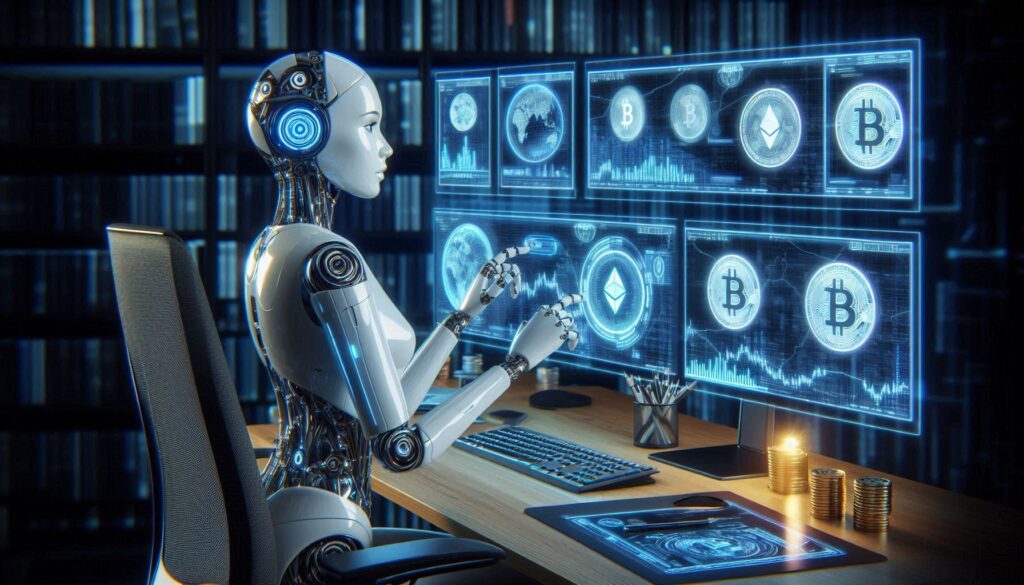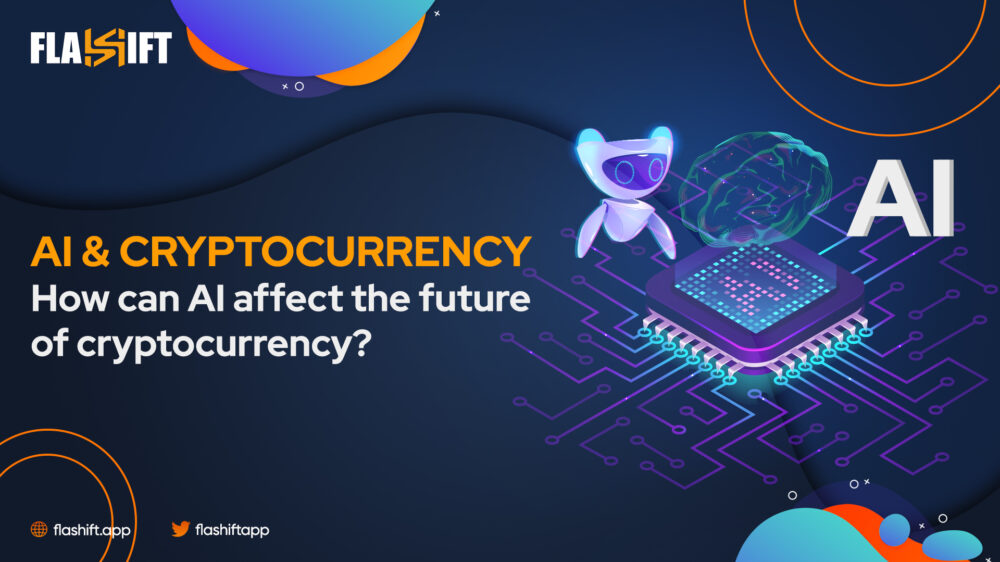AI and Cryptocurrency | AI Coin represent a specialized cryptocurrency engineered to facilitate and energize blockchain networks dedicated to artificial intelligence, such as The Graph and SingularityNET. This digital asset serves as a critical utility token within these ecosystems, enabling users to engage with and leverage the advanced AI technologies embedded within these platforms.
In practical terms, users are required to expend AI Coin to gain access to the comprehensive array of services and functionalities offered by these blockchain-based AI platforms. This expenditure is essential for interacting with the sophisticated artificial intelligence systems and data networks that The Graph and Singularity NET provide. The deployment of AI Coin ensures that transactions and access within these networks are both seamless and secure, thereby supporting the operational integrity and scalability of the underlying AI infrastructure.
The utilization of AI Coin in this manner underscores its pivotal role in the broader context of blockchain and artificial intelligence integration, facilitating not only user access but also contributing to the economic dynamics of these cutting-edge technological platforms.
To exchange cryptocurrency at the best rate, visit the Flashift website, create a registration-free transaction and take advantage of a secure and speedy experience.

How can AI affect the future of cryptocurrency?
It is at this point that AI will actually change the future of cryptocurrencies in terms of how trading and investment strategies are devised. Due to their nature, machine learning and AI can analyze lots of information in real time, therefore spotting patterns and trends that a human could not. The outcome of this can be more precise market predictions, with the development of optimized trading strategies. With AI being further embedded into cryptocurrency markets, the need to manually trade might go down, and high-frequency trading can get that much easier and accessible to a broader swathe of investors.
From a security perspective, AI can amped up safety in cryptocurrencies and blockchain networks by a good deal. Naturally, cryptocurrencies are very prone to hacking and other forms of fraud, but AI can put a damper on these risks by spotting strange behavior in transaction data. AI systems can help in the early detection of suspicious patterns, thus preventing fraudulent activities before they build up. Moreover, AI can enhance audits and safety for smart contracts by automatically finding bugs or vulnerabilities that could be used to attack an application in order to improve the reliability of decentralized applications.
AI’s influence might be extended toward blockchain efficiency and scalability. This is where AI can further improve the efficiency of consensus algorithms, reduce energy consumption, or even speed up verification processes in transaction processing; several of these points have been drag factors in blockchain networking. Also, AI might enable truly personalized financial services-for example, in DeFi through user behavioral analysis and automated decision-making support for lending, borrowing, and investment decisions. By putting these disruptive technologies together, AI and blockchain provide security, efficiency, and user experience to cryptocurrency ecosystems, pushing digital assets further toward mainstream adoption.
What exactly is AI?
Artificial intelligence (AI) is a branch of software engineering that allows robots to make data-driven judgments that progressively resemble human intellect.
Notable common instances involve AI-generated works of art, wherein a machine reads human instructions expressed in natural language in order to make digital art, and ChatGPT, a software program that can ‘write’ based on a brief supplied by the user.
In both instances, the outcomes are similar enough to those that an individual could make that they may be misconstrued for human invention, and the two applications are becoming more advanced.
Use cases for Cryptocurrency and AI
-
- Medical care
AI can assist develop practically every discipline in healthcare, from exposing therapeutic ideas to responding to user demands to detecting discoveries from patients information and showing trends. Institutions may collaborate to enhance treatment while respecting patient privacy by storing patient data on blockchain, especially electronic medical records.

-
- The supply chain
AI and cryptocurrency are revolutionizing supply chains throughout sectors and providing new possibilities by automating a mostly paper-based process, making data accessible and reliable, and providing artificial intelligence and robotics to perform transactions. A company, for example, may measure carbon emissions information at the product or component level, bringing precision and intelligence to carbon reduction operations.
-
- Services in finance
Blockchain and artificial intelligence are revolutionizing the financial services business by facilitating confidence, reducing complexity from a multiparty operations, and increasing the speed of transactions. Understand the financing application procedure. Applicants give permission to view personal records stored on the blockchain. Trust in the data, as well as computerized procedures for reviewing the application, contribute to speedier closings and improved client satisfaction.
The biggest AI cryptocurrency projects
-
- The Graph (GRT)
The Graph is a method for collecting and retrieving information on blockchains in the same manner that Google does for webpages. Monitoring blockchain data can be difficult, but The Graph wants to alter that by organizing data into smaller ‘subgraphs’.
-
- Injective (INJ)
Injective (INJ) is a financial-focused AI crypto platform that provides capabilities for developing decentralized finance (‘DeFi’) apps. Over blockchains, Injective provides trading on margin, instruments such as derivatives and cryptocurrency futures trading.
-
- Render (RNDR)
Render enables designers to hire the computational power required to render computer images from cryptocurrency miners eager to lease out their visual processing machines (GPUs). In 2017, the project was officially launched. RNDR is the Render initiative’s native money, and it is used for using miners’ GPU capacity.
Many AI cryptocurrencies, like Bitcoin and Ethereum, may be purchased through cryptocurrency exchanges such as Coinbase.
To commerce, traders must first establish a trading account, which frequently includes some form of identification confirmation, and contribute actual fiat cash. They’ll eventually be able to click to the exchange’s website for the AI cryptocurreny they are interested in purchasing, input the amount they want to buy, and complete the deal.
The majority of exchanges provide a free cryptocurrency wallet in which to store both public and private keys – the information required to spend or trade digital currencies. If a shareholder wishes, they can keep their private keys offline in a cold wallet.
Given that hackers can’t simply target cold wallets, they may be more secure than hot wallets. But, investors who misplace their cold wallet login credentials won’t receive the assistance they need to access their keys again, unlike those who use hot wallets.
Conclusion
AI’s role in cryptocurrency extends beyond just optimizing trading strategies. It also plays a pivotal role in enhancing mining efficiency. By using AI algorithms, miners can optimize resource allocation and reduce energy consumption, which is a significant concern in cryptocurrency mining. AI-powered systems can predict fluctuations in the energy market, allowing mining operations to adjust in real time for cost efficiency.
Moreover, AI has been instrumental in the development of more robust security protocols within blockchain networks. Through machine learning, AI can detect and prevent fraudulent activities by analyzing transaction patterns and identifying anomalies. This provides a higher level of security, which is crucial as cryptocurrencies continue to gain mainstream adoption.
FAQs
What is the connection between AI and cryptocurrency?
AI helps optimize trading, enhance security, and streamline blockchain processes in the cryptocurrency space.
How does AI improve cryptocurrency mining?
AI can optimize resource usage and predict energy cost fluctuations, making mining more efficient.
Is Flashift’s AI integrated with all cryptocurrencies?
Flashift works with various cryptocurrencies, utilizing AI to offer insights, predictions, and trading assistance across multiple digital assets.
How does AI prevent fraud in cryptocurrency transactions?
AI uses machine learning to detect unusual patterns and prevent fraudulent activities in blockchain networks.
What are the benefits of AI in cryptocurrency trading?
AI enables faster, more accurate trading strategies, enhancing the profitability and reducing risks.
What role does AI play in blockchain scalability?
AI enhances blockchain’s ability to handle a higher volume of transactions efficiently and securely.
Is AI integrated into all cryptocurrencies?
While AI is not a universal feature, many cryptocurrency platforms are adopting AI for enhanced operations.
How does AI improve blockchain security?
AI improves security by identifying vulnerabilities, detecting attacks, and automating threat responses.
Can AI help cryptocurrency investors with risk management?
Yes, AI helps investors analyze market data to identify risks and make more informed decisions.
What is the future of AI in cryptocurrency?
AI’s future in cryptocurrency includes further advancements in mining optimization, security improvements, and predictive analytics.






